The General and the Politician
The General and the Politician
Dwight Eisenhower, Richard Nixon,
and American Politics
John W. Malsberger
ROWMAN & LITTLEFIELD
Lanham Boulder New York Toronto Plymouth, UK
Published by Rowman & Littlefield
4501 Forbes Boulevard, Suite 200, Lanham, Maryland 20706
www.rowman.com
10 Thornbury Road, Plymouth PL6 7PP, United Kingdom
Copyright 2014 by Rowman & Littlefield
All rights reserved. No part of this book may be reproduced in any form or by any electronic or mechanical means, including information storage and retrieval systems, without written permission from the publisher, except by a reviewer who may quote passages in a review.
British Library Cataloguing in Publication Information Available
Library of Congress Cataloging-in-Publication Data
Malsberger, John W.
The general and the politician : Dwight Eisenhower, Richard Nixon, and American politics / by John W. Malsberger.
pages cm.
Includes bibliographical references and index.
ISBN 978-1-4422-3235-8 (cloth : alk. paper) -- ISBN 978-1-4422-3236-5 (electronic) 1. Eisenhower, Dwight D. (Dwight David), 1890-1969. 2. Nixon, Richard M. (Richard Milhous), 1913-1994. 3. United States--Political and government--1953-1961. 4. United States--Politics and government--1945-1989. 5. Republican Party (U.S.: 1854- )--History--20th century. 6. Political culture--United States--History--20th century. 7. Presidents--United States--Biography. I. Title.
E836.M35 2014
320.97309'04--dc23
2013044383
 TM The paper used in this publication meets the minimum requirements of American National Standard for Information Sciences Permanence of Paper for Printed Library Materials, ANSI/NISO Z39.48-1992.
TM The paper used in this publication meets the minimum requirements of American National Standard for Information Sciences Permanence of Paper for Printed Library Materials, ANSI/NISO Z39.48-1992.
Printed in the United States of America
Acknowledgments
Although writing a book is often a solitary and lonely enterprise, I have benefited immeasurably in this work from the support of many individuals and institutions. I am deeply grateful to Muhlenberg College for providing me with a sabbatical in the spring of 2010 and the Class of 1932 Research Professorship for the 20122013 academic year, both of which gave me uninterrupted time I could devote to the political careers of Dwight D. Eisenhower and Richard M. Nixon. It is no exaggeration to say that without these leaves, this work would not have been possible. The staffs of the research rooms of the Dwight Eisenhower Presidential Library and Museum, the Richard Nixon Presidential Library and Museum, and the Rush Rees Library at the University of Rochester were uniformly kind, efficient, and helpful. Their patience and assistance greatly aided my research. The staff of Muhlenberg Colleges Trexler Library met all of my many requests for interlibrary loan material quickly and efficiently.
In the years I have spent with Ike and Dick, I have also profited greatly from the advice and support of many individuals. Students in the several seminars I taught on Richard Nixon and the twentieth century provided the initial reason to study the two presidents, and from their comments and ideas I came to a deeper understanding of our thirty-seventh president. My brother-in-law and sister-in-law, Mr. and Mrs. David Renaud of Fairfield, California, made my research trip to the Nixon Library much more enjoyable than it otherwise would have been; and without the loan of their GPS, I would never have been able to navigate the roads of Southern California. Finally, but certainly not least, without the love and support of my family, this work would have been impossible.
Chapter Introduction
Ike and Dick: The Beginning
The political partnership of Dwight Eisenhower and Richard Nixon began in 1952 mainly for political convenience. Ike was the popular war hero courted by the Republican Party to help it win back the White House after twenty years of Democratic rule. Dick, who had what some regarded as matinee idol good looks, was a young rising star in the party in 1952 and a proven vote getter because of his aggressive anti-Communism. The team of Ike and Dick would go on to achieve great electoral success, winning both the 1952 and 1956 presidential elections by wide margins and, in the process, molding Nixon into one of the top contenders for the GOP presidential nomination in the next decade. Despite its successand although it proved to be one of the more durable partnerships in American politics, lasting until Ikes death in March 1969it was often a complicated partnership.
The Republican Party provided one source of that complication. The partnership of Ike and Dick was, among other things, an attempt to paper over serious ideological divisions in the GOP that had festered throughout the 1930s and 1940s. One wing of the party, the Old Guard conservatives led by Senator Robert A. Taft of Ohio, had never made peace with the social reforms of Franklin Roosevelts New Deal and still hoped to return to the more laissez-faire, small government philosophy that had prevailed before 1932. When Communism threatened the United States in the late 1940s, moreover, Old Guard Republicans embraced a neo-isolationist foreign policy that sought to scale back on the nations overseas commitments to concentrate on strengthening national defense and rooting out all forms of internal subversion. The other wing of the GOP included such individuals as Thomas E. Dewey, Henry Cabot Lodge Jr., Arthur Vandenberg, and George Aiken, who, since the late 1930s, had sought to modernize the partys philosophy to meet the needs of the modern industrial state. These moderate Republicans largely accepted the New Deal welfare state as it existed in 1952 but opposed most efforts to expand it. Additionally, the GOP moderates had been convinced both by the Great Depression and World War II that an international foreign policy was essential for national security.
The Republicans unexpected defeat in the 1948 presidential election convinced Old Guard conservatives that they should reclaim control of the party. They blamed the loss on the me-too campaign Thomas Dewey had waged, which in their minds vowed merely to enact the Democrats legislative agenda but to do so more economically. In their minds the GOP could only return to power by reaffirming the traditional conservative values of limited government. By early 1952, their efforts to realign the Party made it appear likely that Robert Taft would be the presidential nominee.
To forestall the Old Guards plans, Republican moderates led by Henry Cabot Lodge Jr. persuaded a somewhat hesitant Dwight Eisenhower to seek the Partys presidential nomination. Ike agreed to enter American politics because he believed that with the Democrats near total control of the White House and Congress for the past twenty years, a GOP loss in 1952 would do irreparable harm to American democracys two-party tradition. And it was clear to him that the GOP would fail unless it moderated the Old Guards views on domestic and international issues. After Eisenhower won the Republican nomination in July 1952, the choice of Richard Nixon as the vice presidential candidate was the olive branch GOP moderates extended to the bitterly disappointed supporters of Robert Taft. Although his voting record in Congress from 1947 to 1952 indicates that Nixon was more of a political moderate on both domestic and international issues, his virulent anti-Communism, displayed forcefully during the investigations conducted by the House Committee on Un-American Activities (HUAC), gave him great credibility and support among Old Guard Republicans. One of the obstacles their partnership had to contend with, then, was maintaining party unity while simultaneously attempting to modernize its philosophy to meet the challenges of midcentury America.
Next page
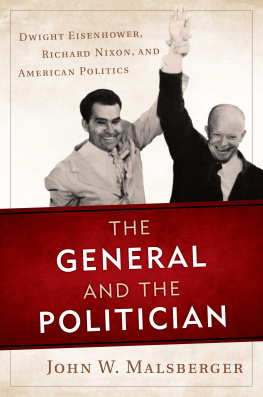
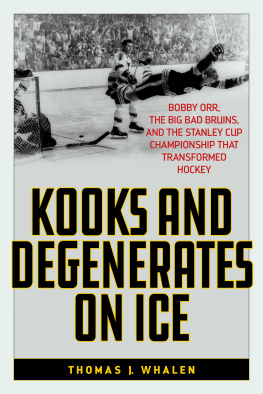
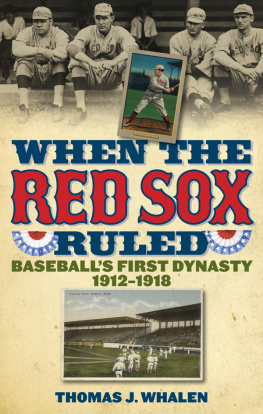

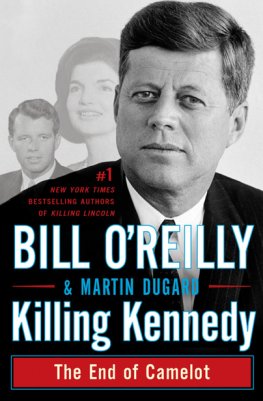

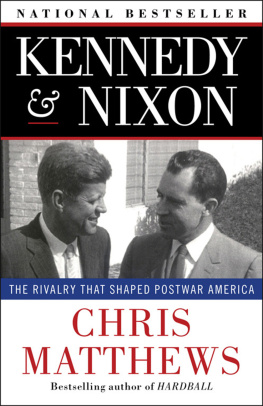
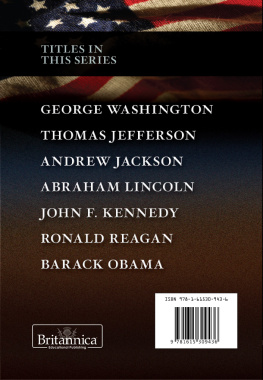
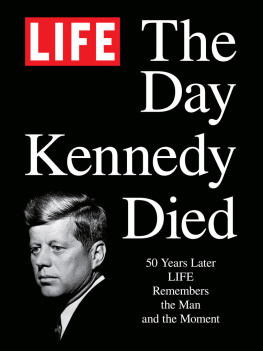

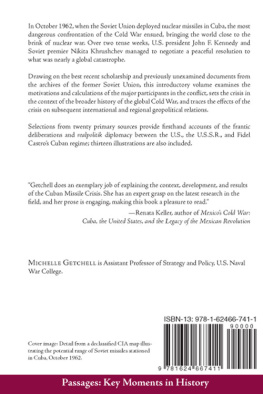
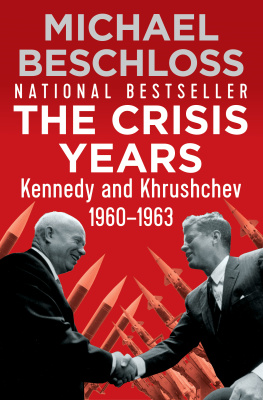
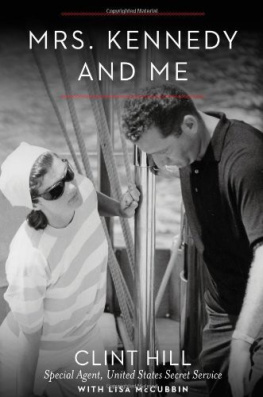
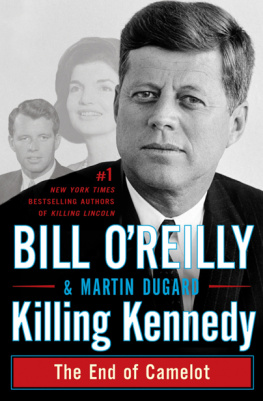
 TM The paper used in this publication meets the minimum requirements of American National Standard for Information Sciences Permanence of Paper for Printed Library Materials, ANSI/NISO Z39.48-1992.
TM The paper used in this publication meets the minimum requirements of American National Standard for Information Sciences Permanence of Paper for Printed Library Materials, ANSI/NISO Z39.48-1992.